
BBS group at ~IC50, September 14, 2022

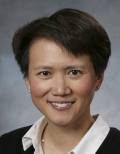
|
Felice Lightstone. Group Leader. Computational biochemistry. Electronic structure methods, atomistic modeling, and molecular dynamics simulations to predict and understand the interaction of small molecules and their interactions with proteins. Design and development of small molecule therapeutics, elucidating enzymatic mechanisms, and design of biomimetics. |
|
|
Christa Manning. Group Administrator. |

|
|
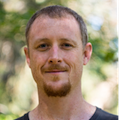
|
Drew Bennett. Biophysics. Molecular dynamics simulations of lipid membrane systems. Using free energy calculations and multiscale methods to characterize lipid bilayers at the molecular level. Current research areas are investigating drug-membrane interactions, ion channels, and protonation states of amphiphiles. |
|
|
Brian Bennion. Medicinal chemistry. Small molecule-protein interactions for discovery of cancer therapeutics and chemical warfare countermeasures. |

|
|

|
Austen Bernardi. Biophysics and computational chemistry. Molecular dynamics simulations of lipid membrane systems. Incorporation of simulation observables in drug discovery models and algorithms. |
|
|
Robert Blake. Numerical analysis. Electrophysiological and elctromechanical cardiac simulations, as well as high-throughput in-silico drug screening, cardiac device testing and validation, and image-based simulations of individual-patient etiologies. |

|
|

|
Tim Carpenter. Molecular Biophysics. Modeling and biomolecular simulation of integral membrane proteins, heterogeneous membrane lipid dynamics, and protein-lipid interactions. Recent focus on critical neuroreceptors and how they interact with small molecules. |
|
|
John Casey. Computational Biology and Microbial Ecoloogy. Constraint-based optimization of microbial physiology and metabolism as a framework to relate the molecular scale to the ecosystem scale. |

|
|

|
Simone Conti. Physical Chemistry; simulations of chemical and biological systems. Biophysics (protein-protein interactions), computational immunology (vaccine design), and material chemistry (small molecule self-assembly on graphene). |
|
|
Konstantia Georgouli. Chemometrics, biosimulation. Development and implementation of a general purpose, high-performance, multi-scale, parallel simulation framework optimized to execute a variety of modeling algorithms in biological simulation. |
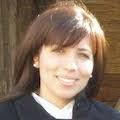
|
|

|
Helgi Ingolfsson. Biophysics. Lipid organization of cellular membranes and their perturbation by small molecules. Functional regulation of membrane proteins by the lipid environment -- including how drugs/amphiphiles can change bilayer properties and thus indirectly alter protein function. Exploring these questions using a combination of experimental and computational methods, including atomistic, coarse-grained, and multi-scale molecular dynamics simulations. |
|
|
Dan Kirshner. Physics, programming, databases. Computational data generation and analysis – currently of predicted small-molecule/human-protein interactions for on- and off-target effects. Working on projects with the American Heart Association and the “ATOM consortium.” |

|
|

|
Ed Lau. Chemistry. Computational chemistry, molecular dynamics simulations and quantum mechanical calculations of biological molecules, computational docking. |
|
|
Ali Navid. Computational Systems Biology. Systems biology of microbial communities, multi-cellular organisms, and host-pathogen interactions. Use of dynamic and steady-state models to examine the workings of deadly pathogens such as Trypanosoma brucei and Yersinia pestis. Also, systems pharmacology: development and use of physiology-based pharmacokinetic and pharmacodynamic models to predict the transient outcome of drug metabolism and therapeutic or toxic events. |

|
|
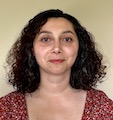
|
Tugba Ozturk. Biochemistry and Biophysics. Computational modeling of within-membrane assembly of membrane proteins. Also, how lipids modulate function, conformational dynamics, and association of these proteins. Biophysics education is an additional interest. |
|
|
Jun Pei. Computational Chemistry. Apply machine learning to refine pairwise force-field potentials of protein-ligand interactions to accelerate drug discovery. Use molecular modeling and molecular dynamics simulations to explore protein-ligand binding processes. |

|
|

|
Heesung Shim. Computational Chemistry, Medicinal Chemistry, and Machine Learning. Machine-learning models – 3D convolutional neural networks – for docking-pose classification for high-throughput virtual screening. Generate atomistic-resolution protein structural models and small-molecule docking to understand molecular mechanisms of action. Structure/ligand-based drug design. |
|
|
Lin Song. Computational Chemistry. Use molecular dynamics and QM/MM to understand enzyme catalysis mechanisms as well as design novel drug candidates based on that understanding. Also, application of free-energy studies to improve drug potency, and development of molecular dynamics force fields for metal ions. |

|
|

|
Jeremy Tempkin. Biophysics. Spatiotemporal integrative modeling of macromolecular complexes. Atomistic and coarse-grained molecular dynamics simulations. Computational methods for enhancing the sampling of rare events in complex systems. Molecular and cellular biology of the nuclear envelope. Scientific software development for multiscale physics and high-performance computing. |
|
|
Sergio Wong. Biophysics. Development of computational methods for bio-molecular simulation, modeling of protein-ligand interactions, and discovery of small-molecule therapeutics. |

|
|

|
Yue Yang. Computational chemistry and drug design. Apply high-throughput molecular dynamics, large-scale free-energy calculations and QM(/MM) calculations to oncology drug discovery. Computers don’t (yet) make drugs, but high-performance computing helps scientists make drugs! |
|
|
Xiaohua Zhang. Computational chemistry. Novel applications of theoretical/computational chemistry methods and software to implement these methods, including (i) drug discovery and high-throughput drug screening C++ toolkit development; (ii) fragment- and structure-based drug design; (iii) high performance computing applied to computational chemistry; and (iv) algorithm derivation and program engineering for molecular simulation. |

|
|
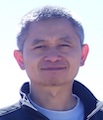
|
Fangqiang Zhu. Theoretical and computational biophysics. Applications (such as simulations) as well as method development for improving the quantitative understanding of biomolecular systems. |
|
|
Yike Zou. Synthetic organic chemistry, computational chemistry. Bridging experimental and computational chemistry to design valuable small organic molecules and large biomolecules. Applying experience in natural product discovery, total synthesis, biosynthesis, and protein design to the computational design of new drugs. |

|
|
|
Paola Bisignano, Research Associate Professor of Molecular Physiology & Biophysics, Vanderbilt University Michele Corzett, retired Geoffrey Feld – Study Director, Metabolon, Inc., North Carolina Sebnem Essiz Gokhan – Assistant Professor, Kadir Has University, Istanbul, Turkey Marc Griesemer – d. 2021. Lucas Koziol – Member of the Technical Staff, ExxonMobil Research and Engineering, Annandale, New Jersey Heather Kulik – Assistant Professor, Massachusetts Institute of Technology, Boston, Massachusetts Catherine Lacayo – Cairn Biosciences, San Francisco, California Mikel Landajuela, Engineering Directorate, LLNL Richard Law – Vice President of Business Development, Evotec, United Kingdom Jerome Nilmeier – Bloomberg LP Tom O'Hara – Rush University Medical Center, Chicago, Illinois Delin Sun Helena Van Tol - Data Scientist, Amyris, Toronto, Canada |